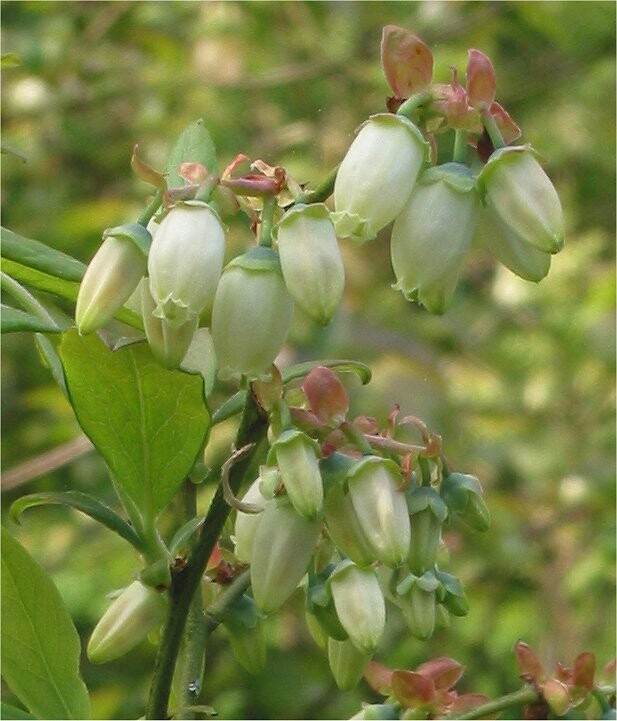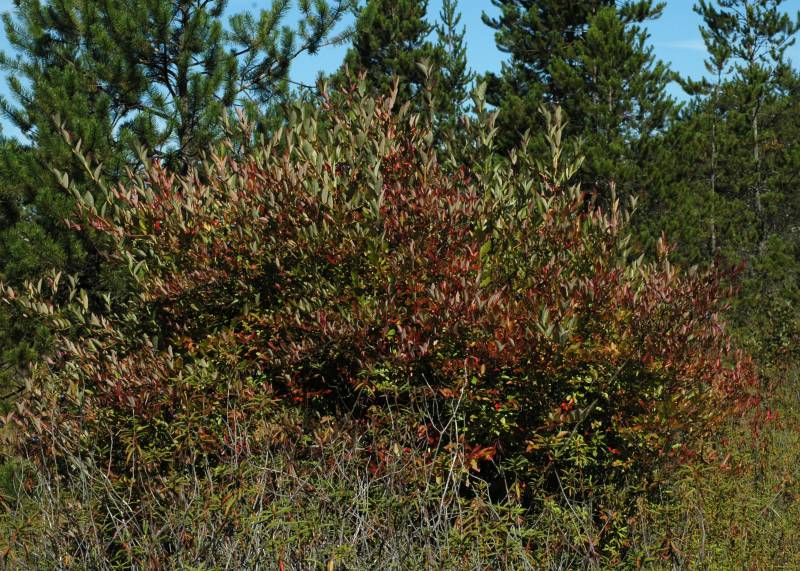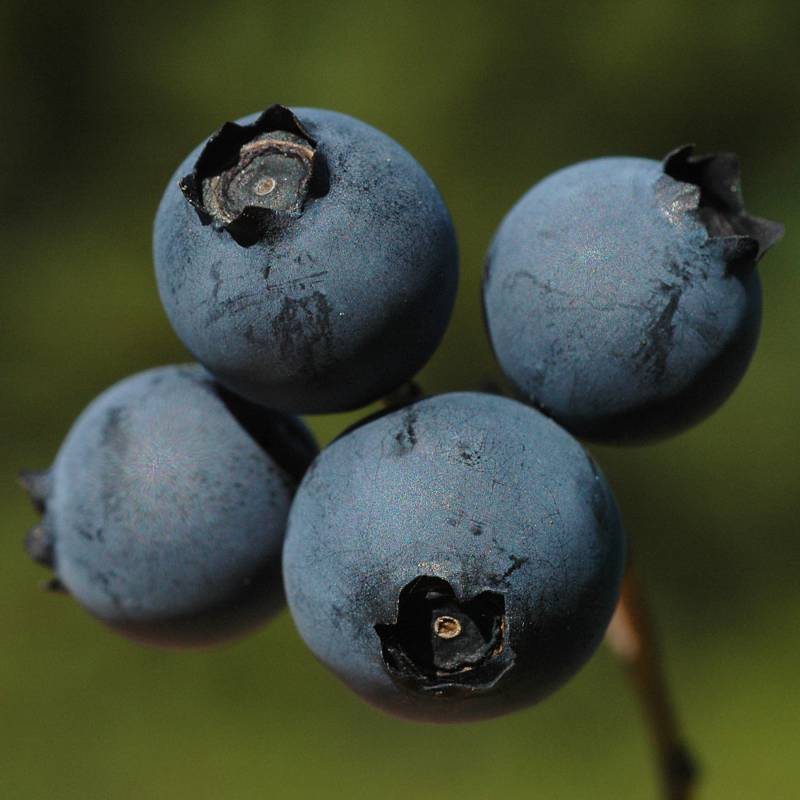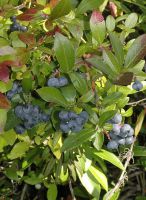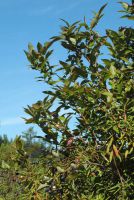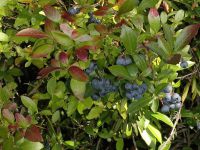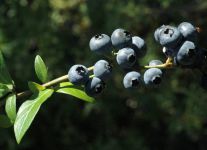Distribution: Occurring west of the Cascades crest in Washington; southwestern British Columbia to southwestern Oregon; native from southern Great Plains to eastern North America.
Habitat: Open swamps, sandy margins of ponds and lakes.
Flowers: May-June
Origin: Introduced from central and eastern North Amercia
Growth Duration: Perennial
Conservation Status: Not of concern
Pollination: Bumblebees, bees
Deciduous shrubs, the stems 10-50 dm. tall; twigs green, angular to terete, hairy in lines.
Leaves alternate, the blades dark green, ovate to narrowly elliptic, 15-70 mm. long and 10-25 mm. wide, entire to sharply serrate, usually glabrous, somewhat leathery.
Inflorescences axillary or terminal, 2- to 10-flowered racemes; calyx 5-lobed, green, glabrous; corolla white to pink, cylindric, 5-12 mm. long, 5-lobed; stamens 10, the filaments with hairs on the margins; anthers opening by pores; ovary inferior.
Berries dull black to blue, 4-12 mm. in diameter, glabrous and glaucous.
Publication: Sp. Pl. 1: 350. 1753.
Cyanococcus atrococcus (A. Gray) Small
Cyanococcus corymbosus (L.) Rydb.
Vaccinium amoenum Aiton
PNW Herbaria: Specimen records of Vaccinium corymbosum in the Consortium of Pacific Northwest Herbaria database.
WA Flora Checklist: Vaccinium corymbosum checklist entry.
OregonFlora: Vaccinium corymbosum information.
E-Flora BC: Vaccinium corymbosum atlas page.
CalPhotos: Vaccinium corymbosum photos.
USDA Plants: Vaccinium corymbosum information.

